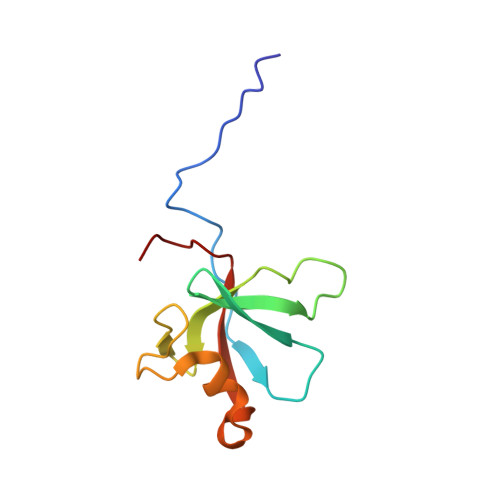Solution structure of synbindin atypical PDZ domain and interaction with syndecan-2
Fan, S., Feng, Y., Wei, Z., Xia, B., Gong, W.(2009) Protein Pept Lett 16: 189-195
- PubMed: 19200043
- DOI: https://doi.org/10.2174/092986609787316342
- Primary Citation of Related Structures:
2JSN - PubMed Abstract:
Synbindin is one component of Transport protein particle (TRAPP) complexes. In the hippocampal neurons, synbindin binds syndecan-2 by its atypical PDZ domain (APD) and may regulate the formation of dendritic spines. To investigate the interaction of synbindin and syndecan-2, we determined the solution structure of the synbindin APD by NMR. The structure of APD is different from the classical canonical PDZ domains by lacking the typical alphaA helix and the signature sequence Gly-Psi-Gly-Psi. These differences indicate that APD may not bind syndecan-2 with the typical binding mode of other PDZ domain proteins. In NMR titration experiments, APD do not bind with the C-terminal TKEFYA peptide of syndecan-2, but can interact with the 32-residue cytoplasmic domain of syndecan-2 very weakly.
Organizational Affiliation:
School of Life Sciences, University of Science and Technology of China, Hefei, Anhui, 230026, China.














